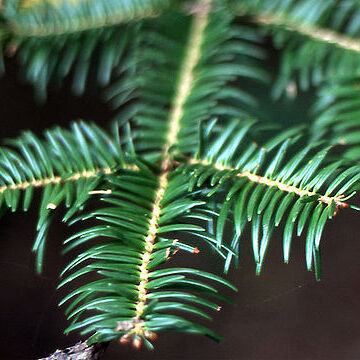A tree. It grows 30-45 m high and is evergreen. The trunk is 2 m across. The bark is black, rough and scaly. The crown is pyramid shape. They young branches are greyish yellow. The leaves are deep, shiny green. They are densely covered with stiff, leathery needles. These can be 35 mm long. They occur in 2 rows forming a wide V. They are on the twigs of the lower branches. The cones are green and turn brown and are egg shaped. They are 10-15 cm long.


